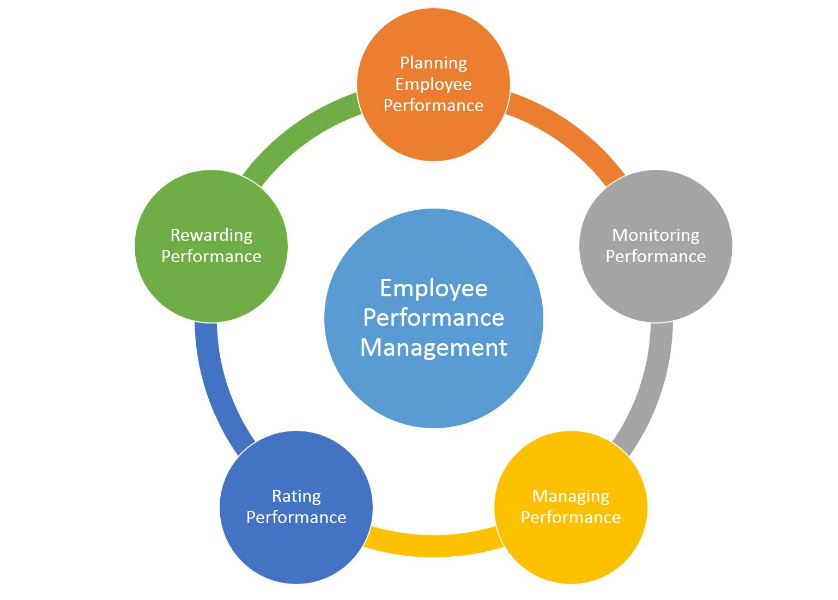The 585 Approach – key actions for managing employee performance

No matter how strong and well documented a business performance strategy is, an organization will never get to outstanding results unless it has a robust employee performance management in place. At the end of the day, the human factor plays an essential role either in the sound success, either in the tragic failure of an organization, no matter what its size is.
In today’s dominating uncertainty, companies which know how to develop and leverage their human capital potential have that particular advantage allowing them to get ahead the competition and overcome the multiple challenges that they come across. This is the context where employee performance management plays the key role of a business enhancer. This is the point in which the 585 Approach can be applied.
What is the 585 Approach?
It is a structured way of turning organizations into a performance driven work place, based on the US Office of Personnel Development Performance (OMP) methodology. The approach relies on the following numbers:
- 5 Key sets of actions governing employee performance management
- 8 Steps to develop an individual performance plan
- 5 Performance principles to keep in mind along the way
When it is regarded beyond the common perception of annual reviews, implementing automatic tracking systems, creating reports and organizing feedback sessions, performance management needs to be valued as a key business process that runs on a continuous basis. In fact, there is an entire ecosystem nurturing employee performance measurement, designed to sustain company growth.
Employee performance management, as a process, has 5 essential actions which form the base of a sustainable performance framework:
- Planning;
- Monitoring;
- Managing;
- Rating;
- Rewarding.
What are the 5 key actions governing employee performance management?
1. In order to attain high levels of performance, employees need to know what their work purpose is, and what is expected of them. This is why the process of cascading organizational objectives leads to Planning goals in advance, envisioning the desired state of performance, together with the impact of each one’s work in the organization.
Furthermore, a set of specific KPIs will need to be integrated in the working standards and become referential in the performance evaluation processes. This, in turn, will maintain the focus during measuring efforts.
Working alongside employees to develop performance expectations, standards, and KPIs will ensure their buy-in which is critical in assuming the accountability of their role. The higher the standards are, the more intense the employees’ development process and impact over the organization is.
2. The next step is to Monitor the progress and performance levels reached during a certain time frame. Basically, there are three categories of elements to be taken into consideration: KPIs, Competencies and Behaviors.
In order to be effective, observation and data gathering tools are used to continuously monitor task completion, internal interactions, and the manner in which responsibilities are carried out. Solely in this manner, real-time feedback can be ensured and provided. There is no better moment to have a significant contribution to improving performance through feedback than the present. Any delay until the scheduled time of the official performance review meeting will diminish its constructive impact.
3. Once progression data is collected, Managing performance relies on addressing under-performance and over-performance. This can be done by comparing KPI results with previously set targets, and competencies and behaviors against established standards. The ultimate goal of employee performance management is to develop the human capital by covering the skills and knowledge gaps, providing educational support and fostering opportunities to tackle further challenges.
4. To have a sense of organizational evolution, Rating performance over a time period will help managers to develop an internal benchmarking across the employees, and easily identify the distance between bottom and top performers. Also of high importance is maintaining objectivity while also relating to standards and company policies when rating the performance which will become a part of the company’s appraisal program.
Moreover, this is a good context to keep a record of individual ratings, so that tracking progress becomes more relevant in time. If development measures and performance improvement actions are associated with the rating record, the company will get a clearer picture on the efficiency of investment taken to get an employee to the expected level of performance. And this is, again, a starting point for strategic decisions.
There is always a price to be paid for poor performance management. Not tackling individual under-performance on the spot, leads to a decrease of productivity, and requires additional resources to solve the problem. Such actions transpose the entire focus towards a defensive strategy rather than a proactive approach.
5. The last set of key actions, but not the least important, are related to Rewarding the performance. There is no recipe on what is the most appropriate performance reward strategy, but there are plenty of options from which managers can choose from, and even mix them. From a simple verbal appreciation, to the most complex stock options plans, rewards tend to reflect the company’s culture, and its approach to fostering employee performance.
The acknowledgement of positive behaviors and outstanding results needs to be translated, and publicly recognized as individual and group contributions to the entire organizational performance. It should be a natural process, similar to managing any other area in the company. Best practices here combine real-time, on-going feedback, with rewarding initiatives. However, the manner in which this is performed, lies solely in the managers’ hands.
Considering the above key actions, the system of measuring employee performance is funneled to one key instrument: the individual performance plan.
I invite you to keep close and discover, in the next articles, the 8 steps development process applied when developing an individual plan, and 5 essential principles to keep you on the right track during the measurement initiatives implementation process.
Image source:

Tags: Employee Evaluation, Employee Performance, Performance review






